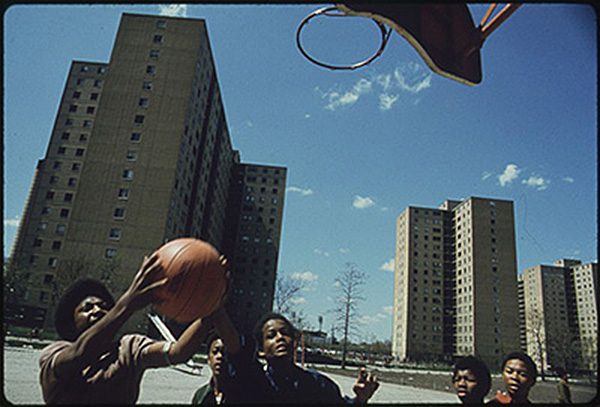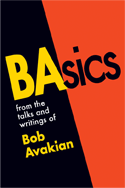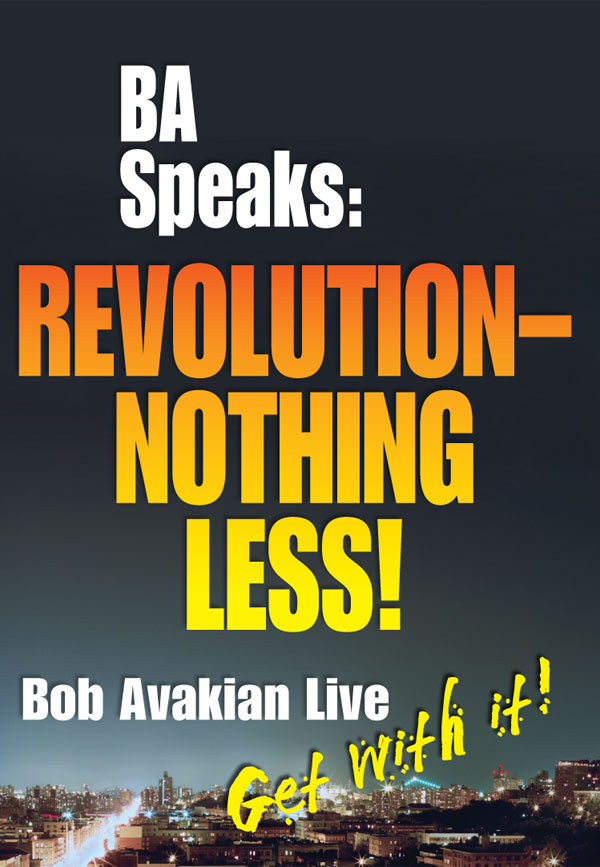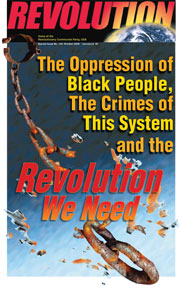The “Code of Silence” and the Venal, Vicious, Drug-Dealing Pigs of Chicago
October 31, 2016 | Revolution Newspaper | revcom.us
Dashcam Video of the Chicago Police Murder of Laquan McDonald
Police murder Laquan McDonald at 5 minute mark
At the end of last year, a video surfaced showing the cold-blooded execution of an unarmed Black teenager named Laquan McDonald by Chicago police in 2014. In the video, as Laquan walks away from the cops with hands at his sides, he is shot 16 times—one less than his age. The video, released 400 days after Laquan was killed, led to revelations of a cover-up of the murder at every level, from top officials of the pig department to the “police review” board to the mayor and the state’s attorney. This sparked broad outrage and angry protests in the streets, and has been a big part of a crisis that has been touched off in the halls of power in Chicago.
A recent series titled “Code of Silence” by journalist Jamie Kalven, a result of a three-year investigation, puts a spotlight on another insidious cover-up of crimes by the Chicago police. The articles by Kalven—who had exposed the autopsy report showing Laquan McDonald was shot 16 times and was the first to report on the existence of the video of his murder—are on The Intercept website. The Invisible Institute, a journalistic production company Kalven is involved with, printed 40,000 copies of “Code of Silence” to distribute to more than 400 locations across Chicago, including all 80 Chicago public libraries.
As “Code of Silence” describes, from the 1990s into the early 2000s, an “anti-gang” tactical team assigned to the huge high-rise housing projects on Chicago’s South Side carried out a large-scale criminal enterprise that demanded bribes from drug dealers in return for protection from police crackdowns and rival drug groups. They enforced this setup with violent attacks on those who didn’t comply or got in their way. Kalven’s series focuses on two low-ranking cops who tried to blow the whistle on this but then were pressured, harassed, and physically threatened by high-ranking officials trying to quash exposure of the illegal activities of their “anti-gang” cops. This was the “code of silence” in operation.
This case is not just about a single group of corrupt pigs and not just about a single city. It reveals some deeper points about the nature and role of the police as armed enforcers of a whole oppressive system in AmeriKKKa.
***
Chicago is one of the cities where Black people from the South came up north in their millions, seeking a better life and freedom from lynch mobs and open segregation. They found themselves being super-exploited in the factories and stockyards of this capitalist system, when they could get any jobs. And they were segregated into strictly prescribed areas by real estate interests backed up by the government and racist white mobs that attacked any Black people who dared to go into the “wrong neighborhood.” Tens of thousands of Black people were herded like cattle into a corridor of housing projects on the South Side. And as industrial jobs disappeared from Chicago and other cities, life became increasingly hard.
The high-rise projects have been demolished by the city—not to improve people’s lives but because those with power and influence wanted to break up what they saw from their capitalist class viewpoint as the danger of masses of angry, desperate people living right near the heart of a major urban center. And capitalist interests wanted to grab this “valuable real estate.” But up until the early 2000s, these projects were the largest concentration of poverty in the U.S.
These were the projects where the Chicago PD tactical unit headed by Sgt. Ronald Watts operated for years, carrying out their Mafia-like activity. Watts, a Black cop, had come up in the neighborhood that he and his outfit now marauded. Jamie Kalven writes, “In exchange for ‘a tax,’ Watts and his team shielded drug dealers from interference by law enforcement and targeted their competition. Their operation went far beyond shaking down the occasional drug dealer. They were major players in the drug trade on the South Side.” How major? According to Kalven, one small-time drug dealer estimated that “for a popular drug line sold at multiple sites ... the Watts tax could be as high as $50,000 a week.”
By the time the two police whistle-blowers—Shannon Spalding and Danny Echeverria—came into the picture, high-level officials in the police department, including its Internal Affairs Division, as well officials in the FBI and the Drug Enforcement Agency (DEA), had been aware of the activities of Watts and his team for quite a while. But somehow, Watts and his crew were continuing to carry out their enterprise with impunity. Clearly, they were not some “rogue” group operating on their own on the sly but were going about their “business” with the knowledge of, if not active backing from, influential forces within the police department and other law enforcement.
Kalven writes, “Beyond Watts, [the investigation by Spalding and Echeverria] was focused on members of his team and senior officials suspected of conspiring with him. It was also rumored both on the street and in the department that Watts was involved in the murders of two drug dealers who defied him.”
Why are we still fighting for justice in 2015?
"Why are we still fighting for justice in 2015?" is a clip from the film REVOLUTION AND RELIGION: The Fight for Emancipation and the Role of Religion; A Dialogue Between CORNEL WEST & BOB AVAKIAN. Watch the entire film here.
Learn more about BA here.
Speaking on Democracy Now!, Spalding said that they were also investigating allegations that Watts and his group were “planting narcotics on innocent individuals and falsifying police reports, falsely arresting them, putting them in prison for false allegations. There’s also the allegations of ... physical violence, of being beaten, if they didn’t want to comply and pay this tax, as well as warrantless seizures, kicking in doors and going through people’s apartments, stealing everything that wasn’t nailed down. And the allegations kept being repeated over and over again from every individual that we would do intelligence debriefings with, along with our confidential informants.”
One informant who Spalding and Echeverria worked with was a homeless man they nicknamed “Chewbacca” who sometimes acted as a drug courier. When they asked him how often he had seen Watts getting paid off, he replied, “Hundreds of times. For years. The boys call him Thirsty Bird. You have to pay taxes to sell dope. Watts ain’t nothing nice. You come up missing if you go up against Watts.”
Chewbacca described one confrontation between Watts and Wilbert Moore—known as “Big Shorty”—a drug dealer who operated out of the Ida B. Wells housing project. Watts was demanding larger payoffs from Big Shorty, who refused and instead threatened to go to the feds on him. A few days later, Big Shorty was gunned down. Chewbacca told Spalding and Echeverria, “Nobody lives to tell, when they get into it with Watts. Watts leaves no witnesses.”

Black youths play basketball at Stateway Gardens' High. Photo: Wikimedia Commons
Watts’ unit wasn’t the only one in the Chicago Police Department carrying out such despicable activity. An “elite” unit known as the Special Operations Section (SOS), for example, ran amok for years—brutalizing people, planting false evidence, breaking into homes without warrants, and stealing large amounts of cash—until a major scandal forced the department to shut down them down in 2007.
And as these groups were carrying out their criminal enterprises, people in the projects faced daily brutalization, degradation, and dehumanization at the hands of the pigs generally. Jamie Kalven, who was an adviser to the resident council at the Stateway Gardens project during some of this period, witnessed this first hand: “Excessive force was more the norm than the exception. For some officers, it was sport. They would grade one another on the blows they inflicted. The language of racial invective—‘nigger,’ ‘monkey,’ ‘hoodrat’—was routine; on occasion, over the loudspeakers of police vehicles. There were officers who found it amusing to toy with those under their power—arranging a foot race of heroin addicts to determine who would go to jail, for example, or forcing a woman they had searched on the street to walk home naked from the waist down.”
****
Spalding and Echeverria thought at first that their investigation had the backing of some officials in the FBI and the Chicago police Internal Affairs. But they met opposition and obstruction in the police department all along—which leaped to a whole other level when a supervising officer “outed” their identity so that the supposedly “confidential” investigation was no longer so. As Spalding told Democracy Now!, “It was imperative that our identities not be revealed, because the targets of the investigation were officers and bosses, and we didn’t know how far up the chain it would go, which meant that they had access to all of our personal information—where we lived, our children, anything that they wanted, which made us very vulnerable. So, to expose our identity is basically throwing us to the wolves.”
The two cops filed a “whistle-blower lawsuit” in an attempt to stop the retaliation against them—naming a number of chiefs, commanders, and sergeants. But that only made the threats against them, coming from high-level officials in the department, even more intense. One former cop told a Chicago TV news station of what she personally heard a sergeant say to Spalding: “That she better wear her bulletproof vest. She may go home in a casket, and he doesn’t want to have to call her daughter and tell her that she’s—you know, she’s gone.”
All this forced Spalding out of the department; Echeverria is still on the force but “very isolated,” according to one report. In May of this year, just before their suit was to go to trial, the city settled the case for $2 million. The investigation of Ronald Watts and his crew eventually led to just one charge of theft of public funds. He and a member of his team, Kallatt Mohammed, pled guilty in 2013. For all the years and scope of their criminal activity, Watts received just 22 months in jail and Mohammed 18 months. They paid several thousand dollars in fines—out of unknown huge sums of money they and their cohorts had stolen.
Bob Avakian, "A better world is possible," from his talk REVOLUTION: Why It's Necessary, Why It's Possible, What It's All About. As part of this clip, BA talks about how guards at the Corcoran prison in California forced prisoners to fight like gladiators.
Learn more about BA here
More tellingly, none of the higher-ups who may have collaborated with Watts or were involved in the suppression of the investigation and retaliation, including death threats, against the whistle-blowers have been convicted of any crime, or even punished in the department. On the contrary, the various officials named as defendants in the whistle-blower suit or alleged to have conspired with Watts have retired from the CPD with six-figure pensions and, in most cases, moved on to other leading positions in “enforcement.”
Kalven notes that the “code of silence” among police is commonly seen as pressure among rank-and-file cops to not report illegal activity and brutality against people carried out by their peers. He says that is an aspect, but points out, “What’s so striking about this story is that the retaliation against these officers is ordered by high-ranking supervisory officials within the department. So it’s really a story ... of how the code of silence operates at the center of the Chicago Police Department.”
****
As damning as the exposure of predatory activities of these criminals in uniform—and the high-level “code of silence” that covered this up for years—is, it is just one layer of the dirt that is coming out about the police in Chicago, in addition to the revelations about the high-level cover-up of the murder of Laquan McDonald. There has been light shed, for example, on how the police kidnapped thousands of people and took them to a former warehouse called Homan Square without even a formal arrest, torturing many of them in an attempt to get “confessions.” An online Chicago Torture Archive, due to open early next year, will contain 10,000 documents about more than 100 Black men tortured by Chicago police between 1972 and 1991.
And clearly, the “code of silence” doesn’t just operate within the Chicago police. The specifics may differ—but what’s revealed here is true of every major police department in the U.S. Just to name one example: A former Baltimore cop (who himself was forced off the force there for trying to blow the whistle on police abuse) wrote in a New York Times op-ed about how a cop who saw others planting drugs on someone was “scared to report it, fearing retaliation.” The ex-cop noted, “It is hard to speak up against colleagues anywhere, but in law enforcement there are more serious concerns, like your safety.” (See “It’s a Scientific Fact: You Can’t Be a Cop in America If You Won’t Be a PIG.”)
This is not fundamentally about corruption, “greedy” cops, or police “bosses” wanting to cover their asses. The police are not just "another gang" or even the "biggest gang." Even the supposedly "honest" cops are part of an oppressive force in this society. As Bob Avakian has pointed out:
The role of the police is not to serve and protect the people. It is to serve and protect the system that rules over the people. To enforce the relations of exploitation and oppression, the conditions of poverty, misery and degradation into which the system has cast people and is determined to keep people in. The law and order the police are about, with all of their brutality and murder, is the law and the order that enforces all this oppression and madness.
— BAsics 1:24
In the inner cities, the police are an occupying force that brutalizes and murders people, sends huge numbers off to prison, and sets people up to fight and even kill each other. The rulers cannot do without such a force, because their system of capitalism-imperialism has created generations of youth whose future has been rendered hopeless even before they are born. The blind workings of this system and the conscious policies of the government have made conditions desperate for millions of Black and Latino people in ghettos and barrios—where many are forced to turn to crime to survive, competing with each other under the dog-eat-dog morality that is promoted by the system. When the drug trade serves their interests, the rulers and their police use it as a means of control—and when they decide to go in another direction, they crack down with fascistic terror.
We do not need to “reform” this oppressive force. What’s needed is an actual revolution that sweeps away the monstrous system that’s behind the pigs who brutalize, murder, and terrorize the people. And we need to work urgently now to prepare the ground, prepare the people, and prepare the vanguard to bring about that revolution as soon as possible.
Volunteers Needed... for revcom.us and Revolution
If you like this article, subscribe, donate to and sustain Revolution newspaper.

 The role of the police is not to serve and protect the people. It is to serve and protect the system that rules over the people. To enforce the relations of exploitation and oppression, the conditions of poverty, misery and degradation into which the system has cast people and is determined to keep people in. The law and order the police are about, with all of their brutality and murder, is the law and the order that enforces all this oppression and madness.
The role of the police is not to serve and protect the people. It is to serve and protect the system that rules over the people. To enforce the relations of exploitation and oppression, the conditions of poverty, misery and degradation into which the system has cast people and is determined to keep people in. The law and order the police are about, with all of their brutality and murder, is the law and the order that enforces all this oppression and madness.





